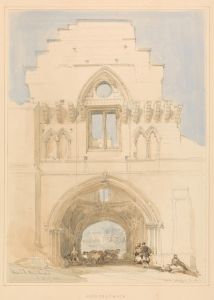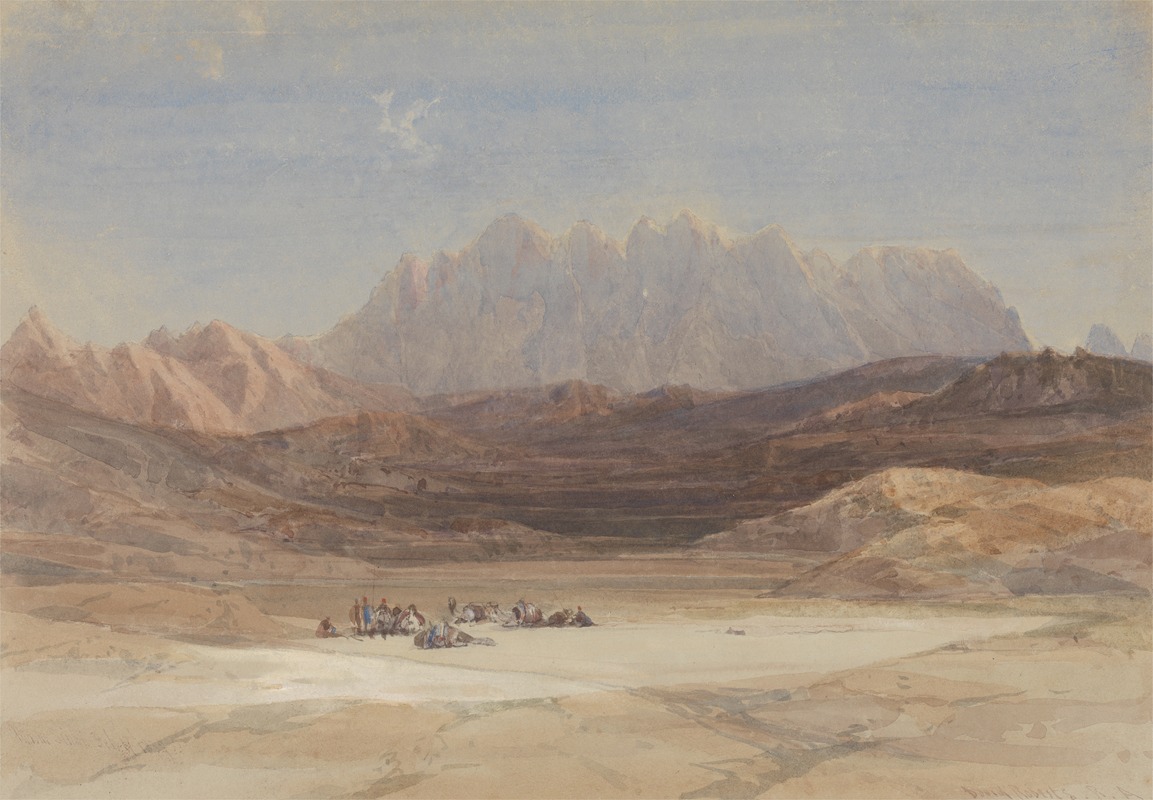
The Plain of El Raheh, Mount Sinai
A hand-painted replica of David Roberts’s masterpiece The Plain of El Raheh, Mount Sinai, meticulously crafted by professional artists to capture the true essence of the original. Each piece is created with museum-quality canvas and rare mineral pigments, carefully painted by experienced artists with delicate brushstrokes and rich, layered colors to perfectly recreate the texture of the original artwork. Unlike machine-printed reproductions, this hand-painted version brings the painting to life, infused with the artist’s emotions and skill in every stroke. Whether for personal collection or home decoration, it instantly elevates the artistic atmosphere of any space.
David Roberts' painting The Plain of El Raheh, Mount Sinai is one of the works created during his extensive travels in the Middle East and North Africa in the 19th century. Roberts, a Scottish painter born in 1796, is renowned for his detailed and romanticized depictions of landscapes and historical sites, many of which were inspired by his journey to the region between 1838 and 1839. This expedition was part of a broader European fascination with the "Orient" during the period, often referred to as Orientalism.
The painting depicts the Plain of El Raha, located near Mount Sinai in the Sinai Peninsula, a site of great religious and historical significance. Mount Sinai is traditionally identified as the location where, according to the Bible, Moses received the Ten Commandments. The plain itself is believed to be the area where the Israelites camped during their journey out of Egypt, as described in the Book of Exodus. Roberts' work captures the vastness of the desert landscape, with Mount Sinai rising in the background, emphasizing the dramatic and spiritual atmosphere of the location.
Roberts visited the Sinai Peninsula as part of his larger journey through Egypt, the Levant, and the Holy Land. He meticulously sketched the scenes he encountered, which he later transformed into finished paintings and lithographs. These works were published in the monumental series The Holy Land, Syria, Idumea, Arabia, Egypt, and Nubia (1842–1849), which included lithographs based on his original sketches. The series was highly influential and brought images of these distant and historically significant places to a European audience.
The painting reflects Roberts' characteristic attention to detail and his ability to convey the scale and majesty of the landscapes he encountered. His works are often noted for their combination of artistic skill and documentary value, as they provide a visual record of sites that were, at the time, relatively unknown to the Western world.
Today, Roberts' paintings, including The Plain of El Raheh, Mount Sinai, are appreciated not only for their artistic merit but also for their historical significance, offering insights into 19th-century perceptions of the Middle East and its cultural heritage.





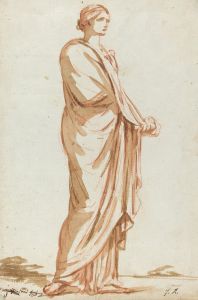
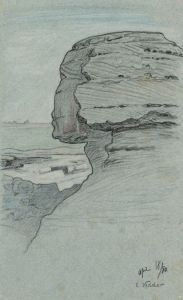
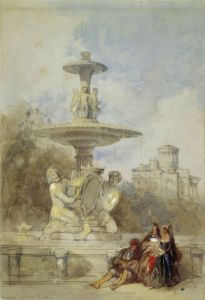

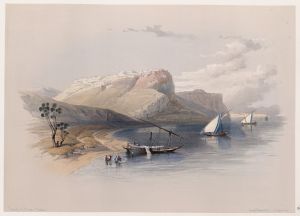
![Interior of the mosque of the Metwalys [Metwalis].](/imgs/217497/s/david-roberts-interior-of-the-mosque-of-the-metwalys-metwalis-d41ed7bd.jpg)

![Lateral view of the temple called the Typhonæum, at Dendera [Dandara].](/imgs/217507/s/david-roberts-lateral-view-of-the-temple-called-the-typhonaeum-at-dendera-dandara-b378b9d7.jpg)
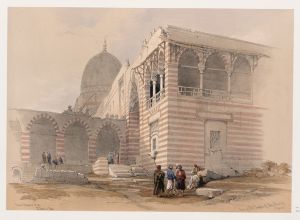
![Ruins. Temple on the Island of Biggeh [Bîga, Bîjah], Nubia.](/imgs/217537/s/david-roberts-ruins-temple-on-the-island-of-biggeh-biga-bijah-nubia-1cd1f41d.jpg)

